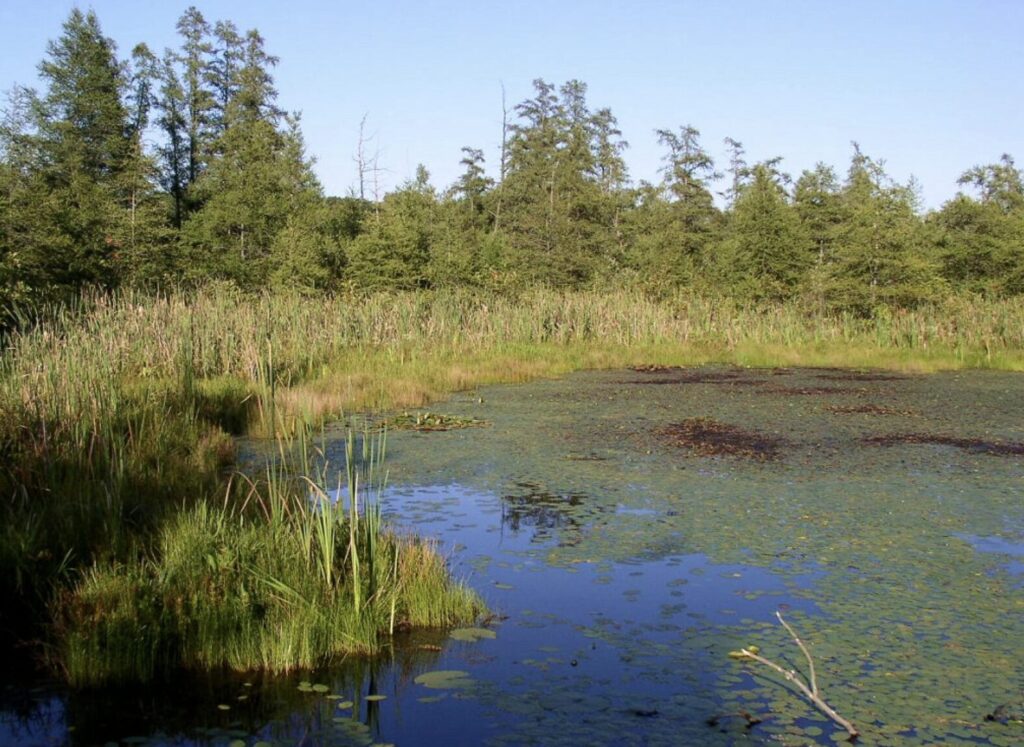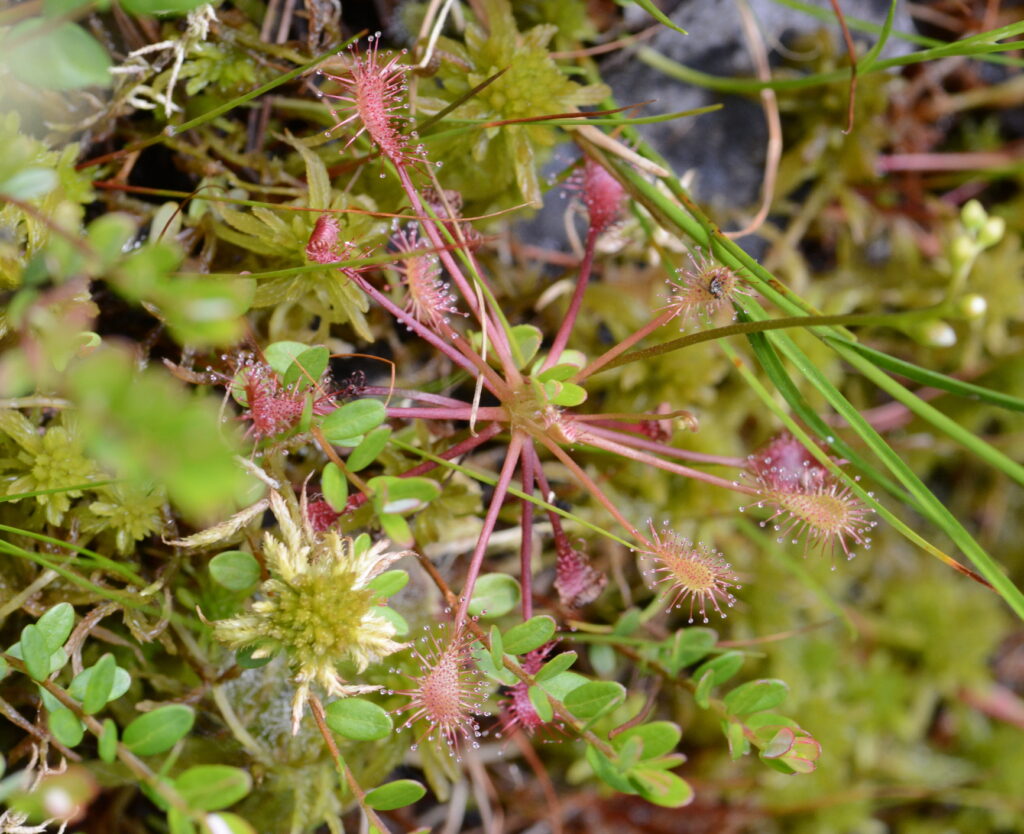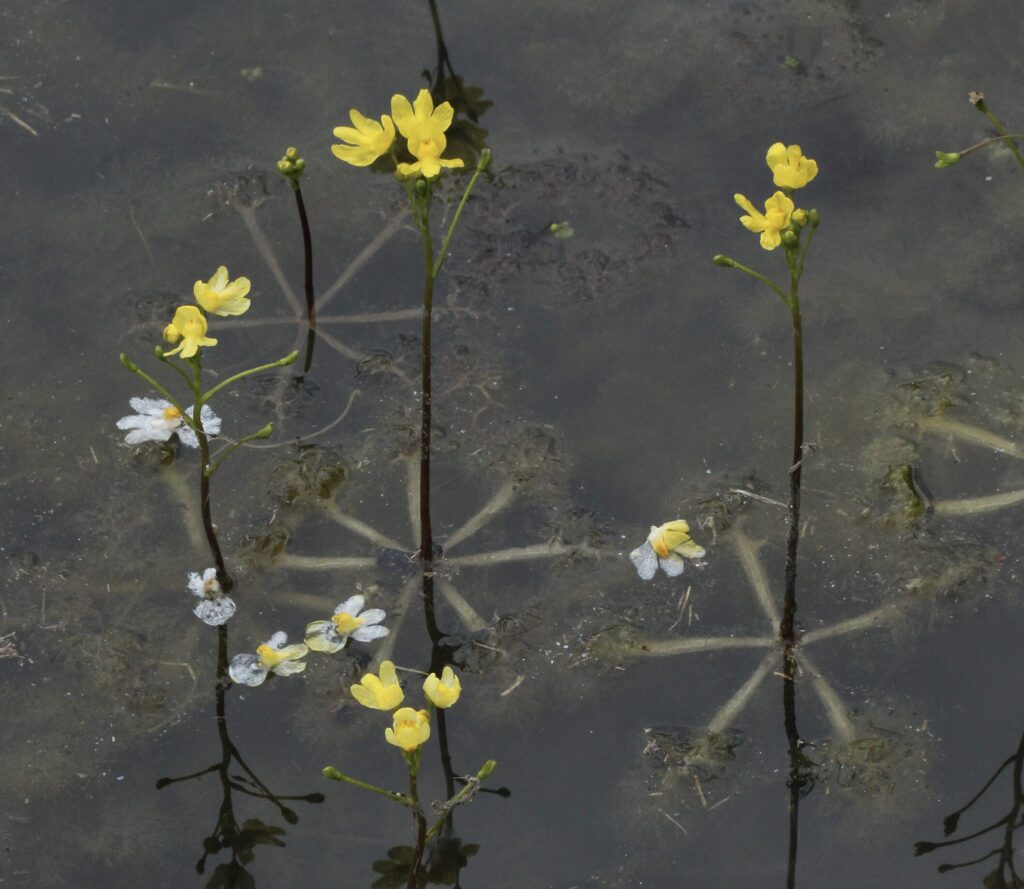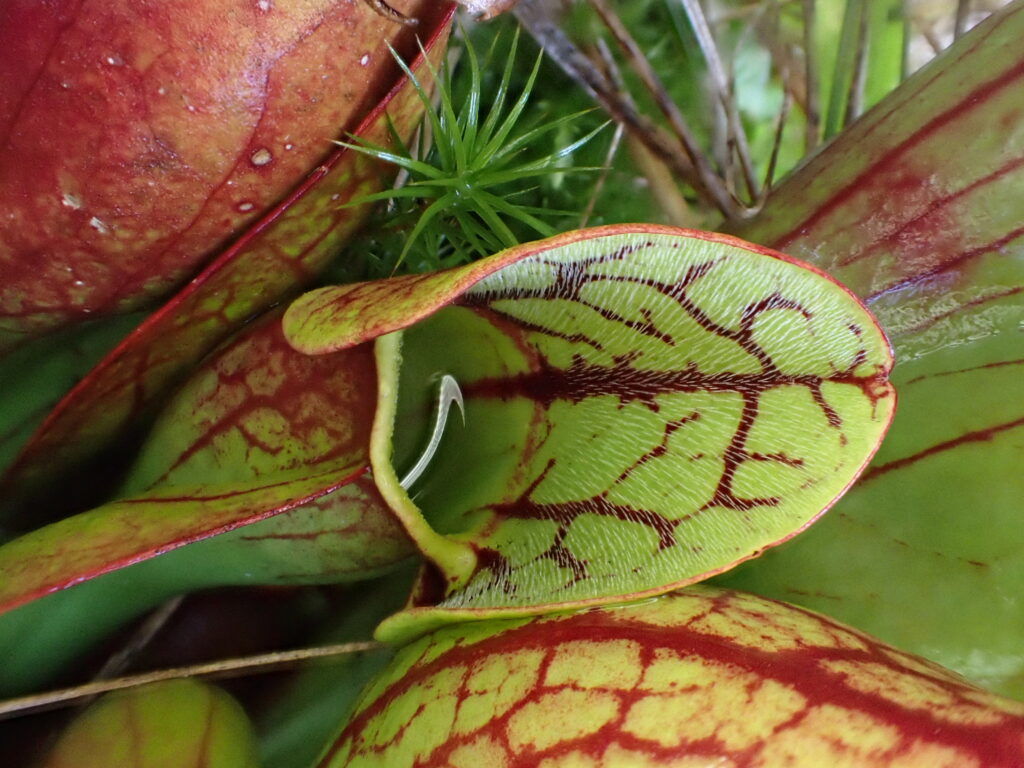Almanac: Strange Carnivores

Boggy areas like this are excellent places to find the subjects of today’s column! Photo: Creative Commons
“Feed me Seymour.”
The other day I was reminded of this iconic line from the the 1986 movie Little Shop of Horrors as I was observing an array of local carnivorous plants. (If the line means nothing to you, or you want a refresher, take a minute to enjoy this clip…it’s fun. I’ll wait.)
Back?
OK. So this plotline in the movie plays on what I can only assume is a shared visceral feeling that plants should not eat animals. We (and all other vegetable-eating animals) are so relatively sentient, mobile, and superior to the poor helpless plants on which we so casually and continuously dine that it just feels wrong that plants could possibly turn the tables and eat us…or even just other fellow animals. It’s creepy. But oh-so real.
I was walking with a group of fellow naturalist-types through the newly-improved Bright Water Bog, a 147-acre conservation area surrounding Ames Pond in Shutesbury, near Lake Wyola. Thanks to the Kestrel Land Trust visitors can now stroll across several long, sturdy boardwalks to enjoy the flora and fauna of a northern bog, as well as surrounding hills and a high rocky ledge with a lovely view to the west. The boardwalk and trails afford excellent opportunities to observe our three local carnivorous plant species: sundews, pitcher plants, and bladderworts.
Sundews are easy to overlook…they are relatively small and blend in with the sphagnum moss on which they often grow. But once you see one, you start to see them everywhere…and they’re beautiful. They feature spatulate leaves covered with hair-like appendages at the end of each glistens a drop of what looks like water. In fact the droplets are full of complex sugars that attract small insects with their aroma and flavor. They’re also super sticky.

When an insect lands on one of the tentacles it often becomes trapped, and the victim’s flailing is sensed by the plant through a process called thigmotropism, which is closely analogous to the sense of touch in animals. The plant responds by slowly closing the sticky leaf around the insect. Glands at the base of the tentacles release digestive enzymes that dissolve the insect, releasing nutrients that the plant could not otherwise obtain due to the acidic conditions in the bog.
The ability to eat animals has been a solution independently found by many plant species the world over, all of them in conditions where normal plant nutrients are in short supply. Many different mechanisms have been invented by plants over the millennia to seize and digest their prey. Venus flytraps, perhaps the most well-known carnivorous plants, have trap-like jaws that snap shut when an insect bumps against one of the sensory hairs in the maw of the trap. (Venus flytraps are only found naturally in a small area of coastal North and South Carolina.)
The surprisingly quick mechanical action of the Venus Flytrap is also used by many species of bladderworts, which hide their animal-destroying machinery underwater, presenting only a lovely yellow orchid-like flower on a thin stalk to us terrestrial observers.

Studding the hair-like underwater filaments of bladderworts are tiny elastic sacs. The plant actively pumps water out of the sacs, which causes the walls to buckle inward, storing elastic energy. The traps have sensitive trigger hairs around the entrance, and when small animals such as water fleas, copepods, or nematodes touch the hairs the trapdoor opens in milliseconds, sucking the prey into the bladder, which then shuts tight. The sack then becomes a stomach, releasing digestive enzymes and converting the animal into a nutrient-rich soup for the plant. Yum.
The most conspicuous of our local vegetable carnivores are pitcher plants. Although not as mechanically active as either bladderworts or sundews, pitcher plants are just as deadly to their preferred prey and just as complex in their design.

The plants produce nectar and emit attractive scents to lure insects to the rim of the pitcher. The rim, however, has a microscopic structure that becomes extremely slippery when wet, so even normally sure-footed flies lose their grip and fall into the pitcher. The inner walls of the pitcher are waxy and difficult to grip, and many species also have down-ward-pointing hairs that thwart an animal’s escape. At the bottom of the pitcher is a pool of rainwater and digestive enzymes that, as with the other carnivores, slowly kill and dissolve the victims.
It’s terribly anthropomorphic of me to imagine what it would feel like for the victims of carnivorous plants to die by being slowly dissolved in various kinds of enzyme-filled vats, but I can’t help it, and it’s more than a little gruesome. But maybe it’s not so bad for these little critters. Maybe, with such tiny brains (if you can call them that) their consciousness is so highly constrained that the concept of “suffering” simply doesn’t apply. That, anyway, is the story that my own consciousness has created in order to maintain my idyllic feeling that bogs are beautiful, peaceful places to appreciate the intricacies of nature.
Almanac is a regular Indy column of observations, musings, and occasional harangues related to the woods, waters, mountains, and skies of the Pioneer Valley. Please feel free to comment on posts and add your own experiences or observations.

With the invite to the movies, and the crazy, singing plant, I was a bit on guard for other possible pitfalls and had to look up thig·mot·ro·pism but there (!) it was – and here is (!) my Amherst Indy highlight of the month column. Thanks, Steve.
Hmmmn…. I guess it dates me, but I was thinking 1960 not 1986:
en.wikipedia.org/wiki/The_Little_Shop_of_Horrors
directed by Roger Corman, in which Jack Nicholson makes his film debut:
widescreenworld.blogspot.com/2015/10/little-shop-of-horrors-1960-vs-1986-and.html
Filmography aside, it’s great to have Steve back with the natural science!
Welcome back Steve! Thanks for another fascinating column. And praise and appreciation to Kestrel Trust for the stellar job they did in restoring trails and boardwalks and for upgrading the entire facility at their new property, Brightwater Bog in Shutesbury. Julian Janowitz, the donor, would no doubt be thrilled with what Kestrel has done with his property. Read more here: https://www.kestreltrust.org/julian-janowitz-gift-art-nature/ and here: https://www.shutesbury.org/sites/default/files/The%20gift%20of%20Julian%20Janowitz.pdf